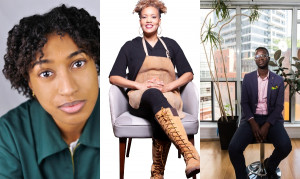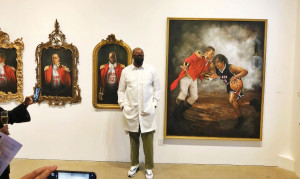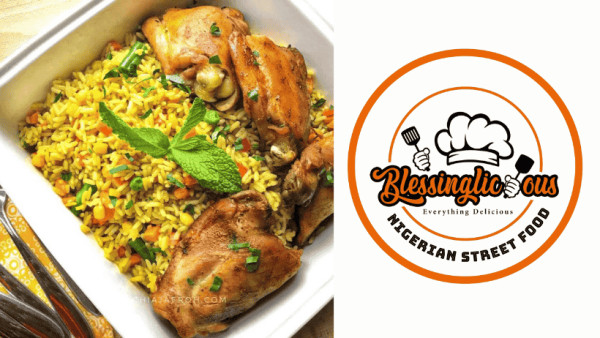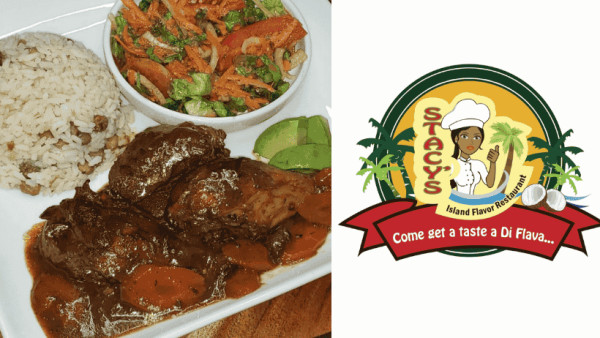A marvel of human engineering, this body still literally falls flat without the bones that hold it up. Scarborough: The Backbone, curated by the Spoken Soul Collective (Paulina O'Kieffe-Anthony, Dwayne Morgan, and Ontario's first Poet-Laureate Randell Adjei) for ArtworxTO’s “Year of Public Art” initiative, highlights the work of Scarborough’s creative community and makes the case that this overlooked area of the city is in fact, the backbone holding everything up. Montano St. Jules (MS) is one of those creatives whose work, black & white photographs of Black bodies representing signs of the Zodiac, is currently on view in the Scarborough Town Centre. I spoke to Collective member Dwayne Morgan (DM) and the artist for ByBlacks.
When and how did the Spoken Soul Collective become involved in curating Scarborough: The Backbone for ArtworxTO and what’s the significance of that title?
DW: In 2019 we put on the Toronto Spoken Soul Festival and we were founded to produce that schedule, however, Covid caused us to have to pivot. The city put a call to curators in different parts of the city and I asked the team if we should put in a proposal, which we did. It was selected by the city and that’s how we came to be selected to curate Scarborough and the Scarborough Town Centre.
The significance of the title is that over the course of the year we want to highlight that despite the negative stereotypes existing around Scarborough, Scarborough is really the backbone of the city with regards to art and culture. Maestro Fresh Wes came from Scarborough and had his hit song “Let Your Backbone Slide” so we played with that iconic theme from Scarborough as well as the reality that so many immigrants who live in Scarborough are actually the working class backbone of Toronto and help hold society together.
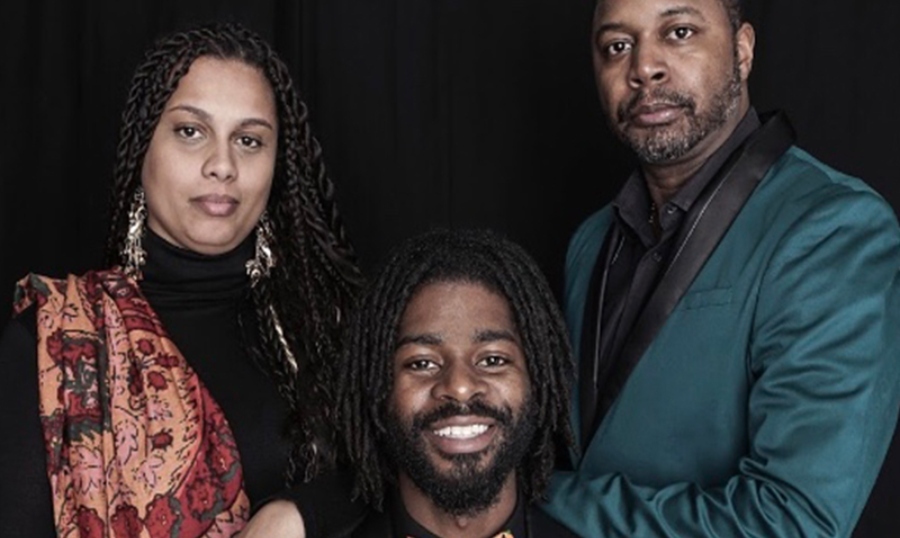
Spoken Soul Collective (L to R) Paulina O'Kieffe-Anthony, Randell Adjei and Dwayne Morgan
Why did you choose to display Montano’s work in the Scarborough Town Centre?
DW: I’ve known Montano for a number of years and we’ve worked together and discussed different thoughts and ideas. While my collective and I were brainstorming we started thinking about artists from Scarborough that we knew whose work is great but haven’t received the spotlight their work should receive. I was very familiar with Montano’s project and thought it was something that could be really interesting for a number of reasons. The fact he’s creating the Zodiac out of human bodies is very creative but also that it’s Black male bodies on display in a shopping mall really forces some people to confront their ideas around Blackness, Black men and Black bodies. We thought it would push the envelope a little bit.
How did you get your start in photography and long have you been doing it?
MS: I come from the world of drawing and painting so photography for me was almost an afterthought. I started out in The Ontario College of Art and I’ve always been artistically inclined. I was a reluctant pursuer of the arts because I initially bought into the idea that I had to have a profession that was respectable and art as something to do on the side instead of a career. I tried to do other things (ie. Biology in college) but art was always calling to me. In the long run, I ended up going to OCA for photography, which I chose because it was something still applicable in the business world and I viewed it as a compromise. It was still a visual means of communication that allowed me to express myself artistically but also use the camera as a business tool. I’ve been using the camera as a tool for both things for about 20 years now.
Does your Drawing and painting background influence your photography?
MS: 110 percent. If you look at my work, you can see my whole premise and design practice uses the same visual principles as a painter or even a sculptor. Composition and lighting are applicable across the board and black and white have always been my principal medium of expression. Black and white is a medium that allows for a pure expression of form. Colour is eliminated from the equation because colour, in itself, has an influence on emotion. Black and white are so pure it just reduces itself to form, so your means of expression comes out stronger.
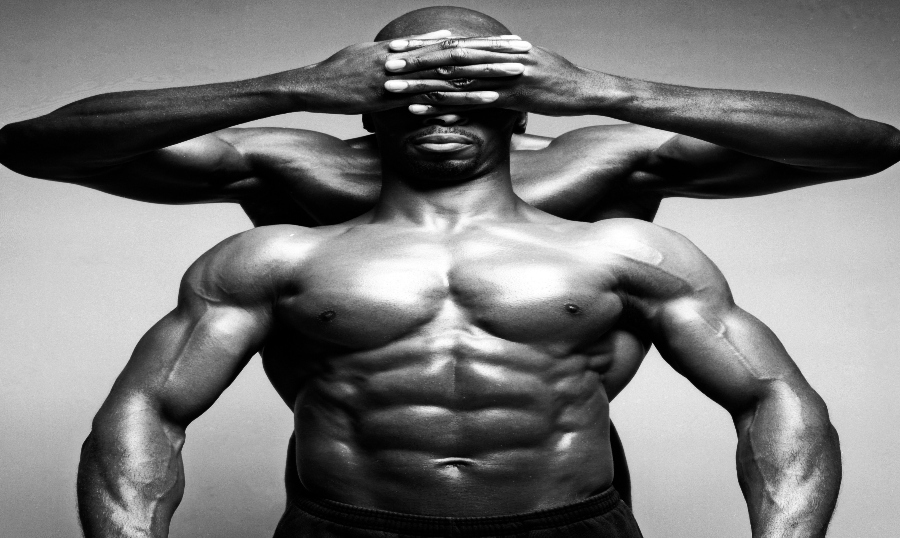
"Libra" Courtesy Montano St. Jules
What inspired you to re-envision the signs of the Zodiac with Black bodies and when did you actually begin putting this work together?
MS: The whole idea behind the Zodiac sign was to find a means of expression that could use the human form. I absolutely love the human form because it’s the most expressive means I can think of that communicates across the board. We all have bodies and we all have the means to communicate through body language. We can actually speak without words. Gestures come together in human form that allows you to express ideas. In terms of using Black bodies to represent the Zodiac; while I don’t fully believe in the idea your star sign affects your personality, it’s really about being familiar with that idea. The idea of that becomes the thing that connects people. In a way that allows people to feel an affiliation to others based on that idea of connection. As Black people, we’ve always been viewed as “different” in the sense that we’re visually different. We can be perceived as aliens. However, we’re all human. I want for people to visually understand and appreciate the beauty and uniqueness that comes from each individual culture from my perspective as a Black man. Yes, they’re Black men, isn't it amazing how beautiful they can look?
I feel like this series has a very cis-gendered masculine energy tied to it without the presence of women. Was that a conscious choice for this series and if so, why?
MS: Yes because, to be blunt, the Black male is the most feared. “Why” is the question that has to be asked and answered. To find a way to allow individuals to see Black males are not a threat. I wanted to present the Black male artistically in a way that would allow individuals to not fear them but be curious and attracted to that beauty and strength.
Part of that masculine energy is obviously related to the flexing, oiled, rippled bodies. Some might say you are intentionally sexualizing your subjects. As a Black photographer who is often taking photos of Black bodies, are you concerned with the “White gaze” fetishizing your work, or is that something you’re actually trying to speak to with this series?
MS: I’ve treated the human body in my series as sculpture. The energy I’m creating is sculpturesque. Based on that, I can’t speak to the individual in terms of how they interpret that. I have no control over that. When Michaelangelo made a sculpture, he can’t really concern himself with whether the viewer is looking at his work as sexual. What I’m trying to do is present the human form in a way that would be appreciated in the same way as sculpture in an attractive package. The zodiac sign is the link that takes it away from just being sexual; it’s more about commonality.
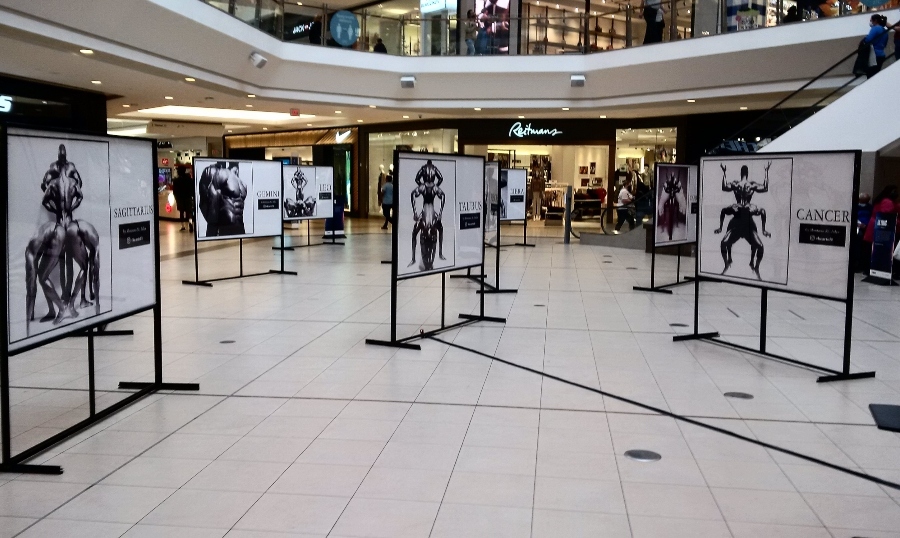
Scarborough Town Centre (Image Courtesy: Montano St. Jules)
There have been a lot of greats to come out of Scarborough in practically every genre of art you can imagine and yet, Scarborough just seems to be having its moment now. With several well-received books situated in Scarborough, an upcoming television show literally named “Scarborough”, and finally some arts funding from the city, why do you think the focus on Scarborough is happening now?
DW: At this point, I think it’s somewhat undeniable what Scarborough means to arts and culture in Toronto. Even absent of any kind of support, Scarborough has been putting itself on the international map. With anything that gets popular, everyone wants to jump on it. You have Stephan James and Shamier Anderson killing it in Hollywood and coming back to start a Black award show in Scarborough, Lily Singh, Scarborough, The Weeknd, Scarborough. We’re taking over internationally without any support. When you look at the performing arts (ie. Barenaked Ladies) there is no performing arts centre in Scarborough, So how do we produce these talents with no performing arts centre here? So there must be something very special about this part of the city and people have noticed and are thinking about what could happen if they actually put some support into this area.
MS: I totally agree with Dwayne. There’s a lot of talent embedded in this region and we need to have some means to allow these individuals to come together to really push forward creatively. What I’ve tended to notice is that areas of great struggle tend to create great work.
DM: You grow up in Scarborough as underdogs. Nobody expects anything of you so you have this chip on your shoulder like, “I’m going to show you.” There are also a lot of first-generation Canadians who are the first in their family who have one foot in the old world and one foot in the new one. You have so much to pull from whether that’s your Caribbean or African background and apply that to your Canadian background to just create. Especially when nobody expects anything of you, you can just be creative.
ArtworxTO Statement:
Scarborough: The Backbone creates a dynamic and exciting celebration of the arts, through a creative and community-focused approach. The Scarborough Town Centre becomes our canvas as we celebrate visual and performing arts, while connecting to the public through interactive activities. The richness of Scarborough will be highlighted through food, fashion, art, music and more. Other exhibitions include in ArtworxTO Hub East include work by Anthony Gebrehiwot, David Delisca, Joshua “Scribe” Watkis, Celeste Drakes, Shqdel, Shahaddah Jack, Alex Navarez, Sid Naidu, and Kyle Gervacy.
For more info on all the exhibitions on display for ArtworxTO visit: https://www.artworxto.ca/
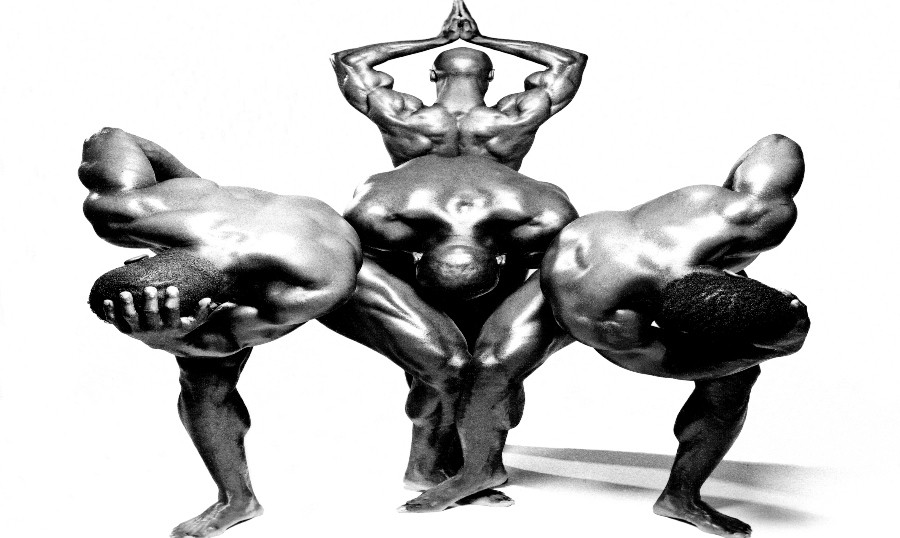
 By
By 




